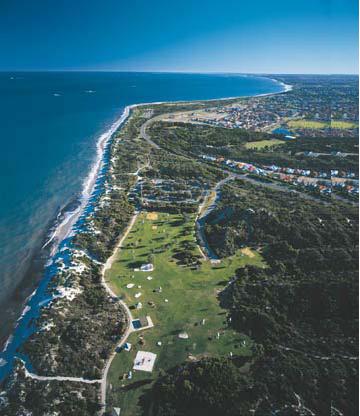
The capital of Papua New Guinea is Port Moresby, which is located on the southern coast of Papua province. It covers 253 square kilometers and has a population of 300,000. Port Moresby takes the Owen and Stanley mountains as its barrier, with water on both sides. One side is a natural harbor, Fairfax Bay, on the other side are the corals of the sea, landscapes, a bay and harbor with beautiful scenery.
Port Moresby has an average elevation of 200 meters, though it is on the coast, and the climate is partially dry. In drought years, the mountains surrounding the city are brown and yellow. Its annual average temperature is around 21 to 32 C with annual dry and rainy seasons. Affected by the trade winds from May to November, the southeast wind comes with less rainfall, so the climate is cool. From December to April, the monsoon often comes with a northwest wind, making it wet and hot, the temperature sometimes reaching 39 C. The annual rainfall is about 1,000 millimeters. Due to its natural and geographical factors, Port Moresby has relatively few trees, but it has rolling hills and vast grasslands covered with plants and perennial flowers.
Port Moresby is divided into seven districts and dozens of towns, with Port Moresby, Boroko and Hohola the main commercial centers. The political and cultural center is mostly Waigani. The government's major Ministries Office Building, the Capitol, the Supreme Court, National Museum, Art Museum, National Library, Archives, Agriculture Bank, postal headquarters, University of Papua New Guinea, Administrative Institute, City Hall, the Prime Minister's Office, State Guesthouse, a sports center built with help from Jinan and missions from all over the world are all located in or near Waigani.
Port Moresby is a commercial city, with its manufacturing and processing industry having just started. Large and medium-sized commercial enterprises are controlled by foreigners, with foreign goods flooding the market and prices expensive. The consumption index is the same as it was in Tokyo in 1998, with inflation surpassing that in Japan's biggest cities. On the outskirts of villages, residents still live in the traditional way. As many homeless people from the countryside flock to the capital every year, there is temporary housing all over Port Moresby, which detracts from the city's appearance and creates problems for municipal development.
In 1873, the British captain John Moresby explored the coastline and found a natural harbor, which he named Port Moresby, after a port in Fairfax which was named after his grandfather. Later, British missionaries and merchants established a foothold and turned the settlement into a small town.
In early 20th century, the British gave over management of the Papua colony to Australia, and the port became the center of the colony. During the Second World War, the port was a strategic base for resistance against Japanese aggression in northern Australia.
In 1971, the Papua New Guinea Autonomous Government proclaimed the port a city and established the first council. In 1974, the autonomous government decided that after PNG became independent, the capital would be Port Moresby. In 1983, the port's capital region interim committee was established.
Port Moresby has become an emerging medium-sized city, and the political, economic and cultural center of the country. Its traffic, transport and networks information are close to the top in the south Pacific region. Its harbor port can directly berthed 10,000 tons of ships. the telecommunications network connects to more than 100 countries. the capital airport receives passenger and cargo planes and Papua New Guinea's civil aviation sectors connects to North America, Oceania, Europe and Asia.
The city has attractive tropical natural scenery, and the country's unique traditional culture attracts more foreign tourists every year. As the new window city of the country, Port Moresby is now a busy city.
The port has sister city relationships with Wellington in New Zealand, Goulburn and Townsville in Australia, and Suva in Fiji. Its sister city relationship with Jinan was established in 1988, and frequent high-level visits have continued for more than a decade. In September 2000, the vice-mayor of Jinan, Yang Peiqin and Comrade Zhang Fushan led a Jinan economic, trade and cultural delegation to Port and took part in PNG's 25th independence anniversary celebrations. In July 2001, Port Moresby's chief executive, Bernard Peter, led a delegation to our city and received a warm reception from then mayor, Xie Yutang. As a return visit to strengthen economic and trade cooperation, in September of the same year, Wang Liang, the deputy minister of the publicity department of the municipal Party committee, led an economic and trade delegation of nine to pay a friendly trade visit to PNG and Australia.





